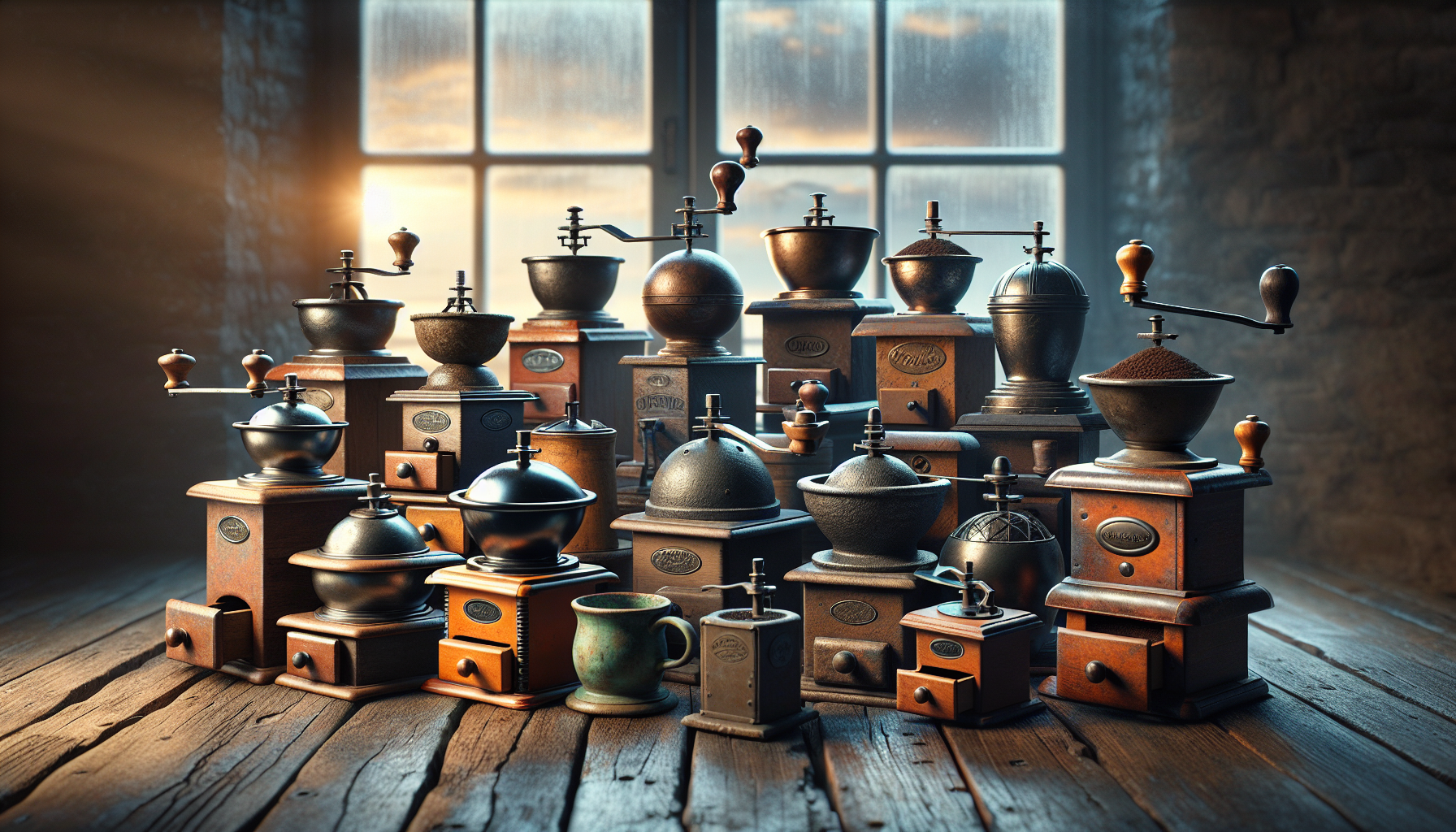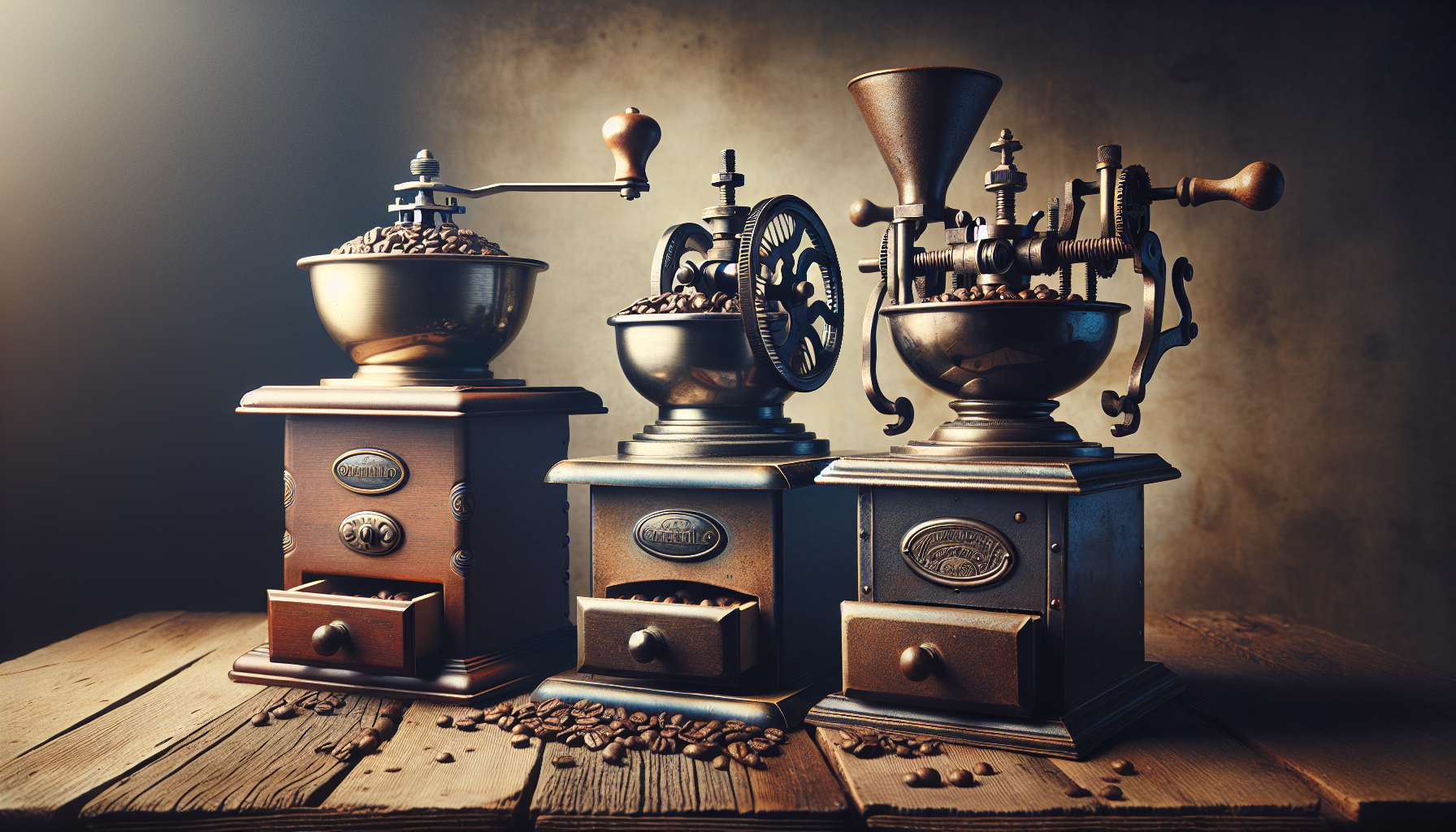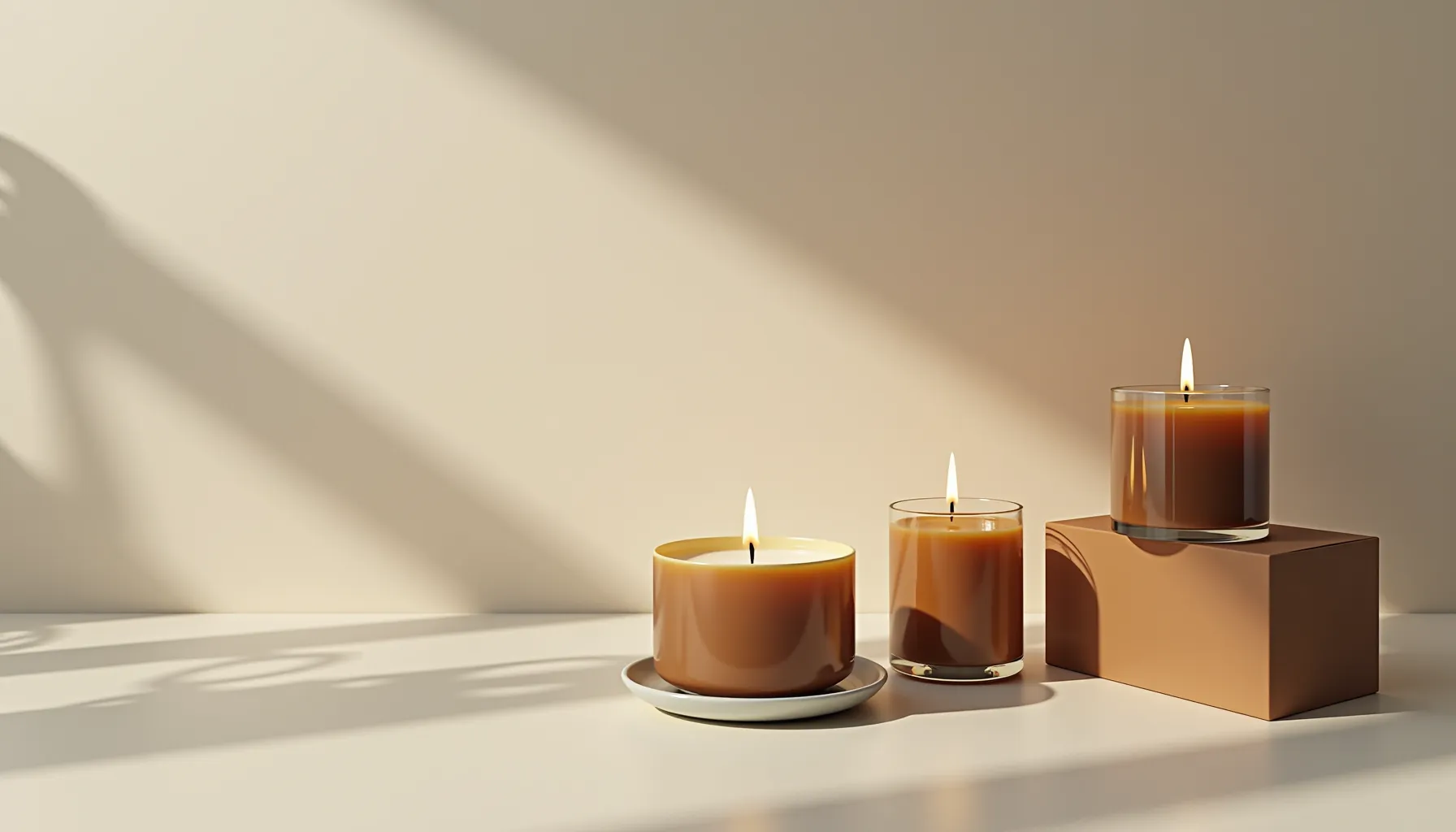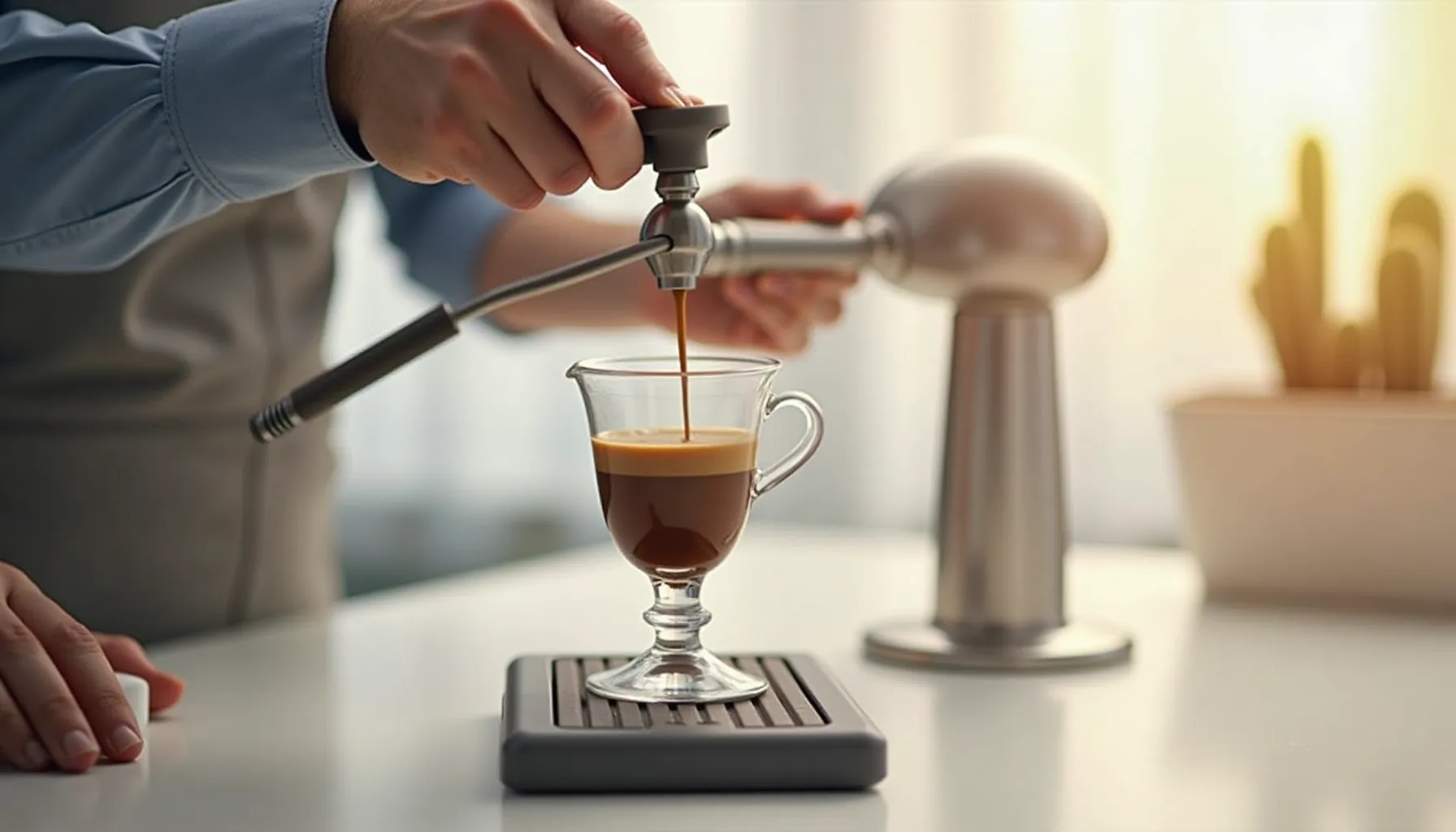The Timeless Charm of Antique Coffee Grinders: A Journey Through History and Flavor
An antique coffee grinder is more than just a tool; it's a portal to a bygone era of craftsmanship and ritual. These charming devices have been grinding beans since the 15th century, evolving from simple mortars and pestles to intricate machines that blend form and function.
Today, collectors and coffee enthusiasts alike seek out these vintage treasures, drawn to their unique designs and the promise of a richer, more flavorful brew. From hand-cranked models to early electric versions, each grinder tells a story of innovation and tradition.
Join us as we explore the fascinating world of antique coffee grinders, from their historical roots to their enduring appeal in modern kitchens. Whether you're a seasoned collector or simply curious about these quaint artifacts, you'll discover why these grinders continue to captivate coffee lovers around the globe.
Key Takeaways:
- Historical significance: Antique coffee grinders date back to the 15th century
- Craftsmanship: Each grinder showcases unique designs and materials
- Flavor enhancement: Manual grinding often results in a superior taste
- Collectibility: Vintage grinders are sought after by enthusiasts worldwide
- Cultural impact: These devices reflect evolving coffee consumption rituals

The Evolution of Coffee Grinding: From Ancient Times to Modern Day
The journey of coffee grinding is as rich and complex as the brew itself. In ancient times, coffee enthusiasts relied on simple tools like mortars and pestles to crush their precious beans. This method, while effective, often resulted in inconsistent grinds and a less-than-ideal cup of joe.
As coffee's popularity spread, so did the innovation in grinding techniques. The 15th century saw the birth of the manual coffee grinder, a game-changer that allowed for more uniform grounds and better flavor extraction. These early grinders, often made of wood or metal, became prized possessions in households across the globe.
Fast forward to the 20th century, and the electric grinder burst onto the scene, promising convenience and speed. While these modern marvels certainly made the grinding process quicker, many coffee purists argue that they lack the charm and control of their manual predecessors.
Antique Coffee Grinder Types: A Collector's Guide
For those bitten by the vintage bug, antique coffee grinders offer a fascinating world to explore. Hand-powered grinders, the epitome of vintage charm, come in various shapes and sizes. From sleek wall-mounted models to ornate tabletop versions, these grinders are not just functional but also serve as stunning decorative pieces.
Early electric models bridge the gap between tradition and convenience. These transitional pieces, often dating back to the early 1900s, showcase the ingenuity of their time. They're highly sought after by collectors who appreciate the blend of old-world craftsmanship and modern technology.
Notable Brands and Their Signature Designs
Peugeot: A Legacy of French Craftsmanship
Peugeot, a name synonymous with quality, has been crafting coffee grinders since 1840. Their antique models, often featuring distinctive lion's paw feet and elegant wooden bodies, are prized for their durability and precision grinding mechanisms. A well-maintained Peugeot grinder from the late 19th century can still produce an excellent grind today, testament to their enduring quality.
Arcade Crystal: American Innovation in Coffee Grinding
Arcade Crystal grinders, produced in the early 20th century, represent a uniquely American contribution to coffee grinding history. Known for their glass hoppers and cast iron bases, these grinders offer a delightful blend of functionality and aesthetics. The transparent hopper allows users to watch the beans transform into grounds, adding a visual element to the grinding ritual.

The Art and Science of Antique Coffee Grinder Mechanisms
At the heart of every antique coffee grinder lies a fascinating mechanism that marries art and science. The key to understanding these machines is the distinction between burr and blade grinding. Burr grinders, found in most high-quality antique models, use two abrasive surfaces to crush beans with precision, resulting in a more uniform grind and better flavor extraction.
The materials used in these grinders play a crucial role in both aesthetics and functionality. Wood, often beechwood or walnut, lends warmth and character while also absorbing excess oils. Metal components, typically brass or cast iron, provide durability and can impact the taste profile of your coffee.
Many antique grinders boast adjustability features that allow coffee enthusiasts to fine-tune their grind. From coarse settings perfect for French press to fine grinds ideal for espresso, these versatile machines cater to various brewing methods, showcasing the ingenuity of their designers.
The Cultural Significance of Coffee Grinding Rituals
Coffee preparation is more than just a means to caffeine; it's a ritual steeped in cultural significance. The act of grinding coffee beans has long been a social tradition, bringing people together and marking the transition from busy days to moments of relaxation and connection.
Different regions have developed unique grinding practices that reflect their coffee culture. In Italy, for instance, the espresso culture demands a fine, consistent grind, often achieved with precision-engineered grinders. This emphasis on perfection in grinding mirrors the Italian dedication to the art of espresso making.
Turkish Coffee Grinding Customs
Turkish coffee preparation elevates grinding to an art form. The beans are ground to an ultra-fine powder, almost like flour, using traditional brass grinders called "kahve değirmeni". This method, unchanged for centuries, produces a uniquely rich and robust brew that's an integral part of Turkish hospitality and social gatherings.
Collecting and Caring for Antique Coffee Grinders
For those looking to start or expand their collection of antique coffee grinders, navigating the market can be both exciting and challenging. When buying, consider factors like age, condition, brand reputation, and rarity. Authentic pieces from renowned manufacturers like Peugeot or Zassenhaus can fetch prices ranging from $50 to over $500, depending on their condition and historical significance.
Assessing the value of an antique grinder involves examining its craftsmanship, functionality, and provenance. Look for original parts, intact mechanisms, and signs of genuine age. Consult price guides and expert opinions to ensure you're making an informed purchase.
Preservation Techniques for Different Materials
Proper care is crucial for maintaining the beauty and functionality of antique grinders. For wooden grinders, use a mild soap solution and avoid excessive moisture. Metal components benefit from light lubrication to prevent rust. Regular cleaning and appropriate storage in a dry environment will help preserve these treasures for future generations.
Grinding Towards a Flavorful Future
As we've journeyed through the rich history and intricate world of antique coffee grinders, it's clear that these devices are more than just relics of the past. They represent a tangible connection to coffee's storied heritage and a growing movement towards mindful consumption in our fast-paced world.
The resurgence of interest in manual grinding isn't just nostalgia; it's a recognition of the superior flavor and experience these methods offer. As we look to the future, the principles embodied by antique grinders - craftsmanship, sustainability, and the pursuit of perfect flavor - are increasingly relevant.
Whether you're a collector, a coffee aficionado, or simply someone who appreciates the finer things in life, antique coffee grinders offer a unique blend of form and function. They remind us that sometimes, the old ways are the best ways, especially when it comes to savoring life's simple pleasures.
Frequently Asked Questions
What makes antique coffee grinders superior to modern electric grinders?
Antique coffee grinders, particularly burr grinders, often provide more consistent grinds and better flavor extraction. Their manual operation prevents heat buildup, which can affect coffee taste, and allows for greater control over the grinding process.
How do I determine the value of an antique coffee grinder?
The value of an antique coffee grinder depends on factors like age, condition, brand, rarity, and functionality. Research comparable sales, consult price guides, and consider expert appraisals to determine a fair value.
Can I use an antique coffee grinder for daily brewing?
Yes, many antique coffee grinders are still suitable for daily use. Ensure the grinder is clean, well-maintained, and free from rust or damage. Regular care will keep it functioning properly for years to come.
What's the best way to clean and maintain an antique coffee grinder?
Clean wooden parts with a mild soap solution, avoiding excess moisture. For metal components, use a soft brush to remove residue and apply light lubrication to prevent rust. Store in a dry place to preserve the grinder's condition.
Are there any modern coffee grinders inspired by antique designs?
Yes, several manufacturers produce manual coffee grinders inspired by antique designs. These combine traditional aesthetics with modern materials and engineering, offering the best of both worlds for coffee enthusiasts.












